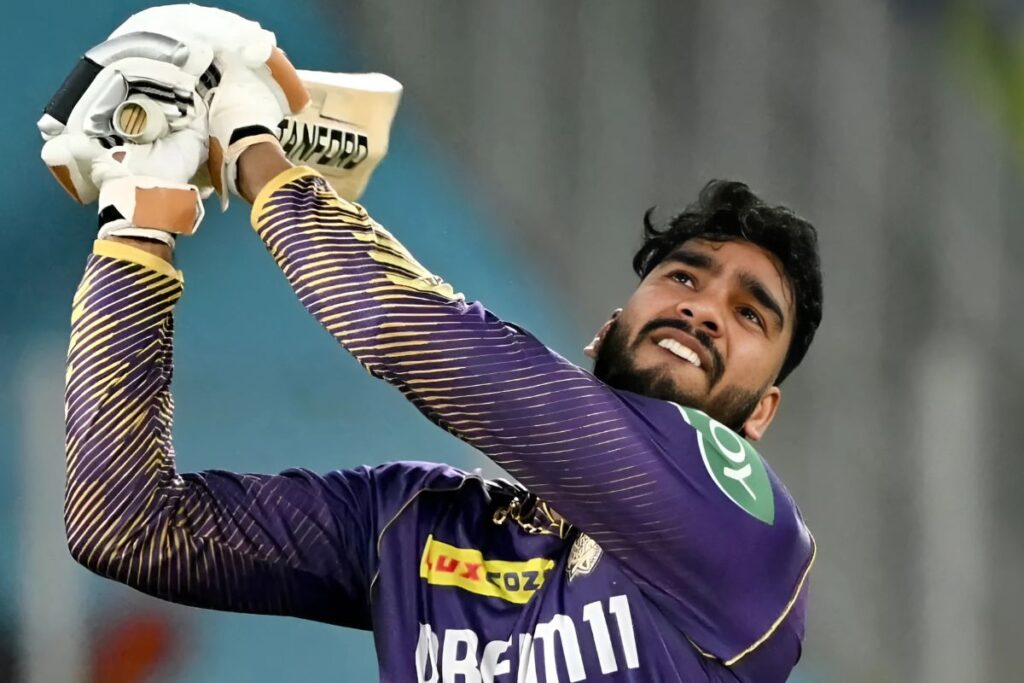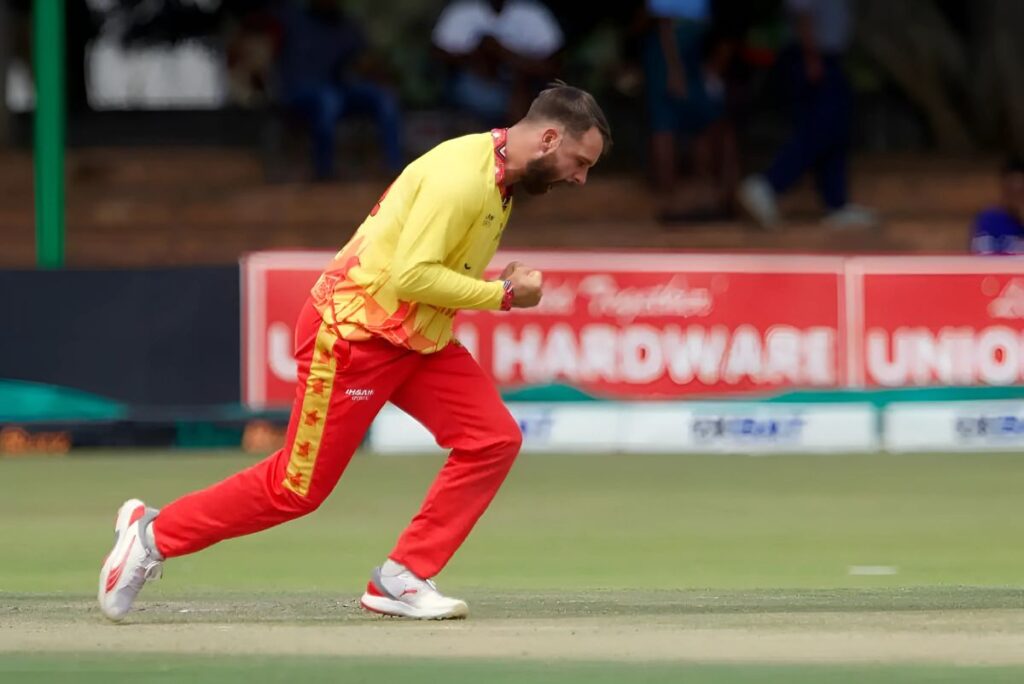The Science of Fast Bowling: Mechanics and Training

Effective energy transfer from the legs to the upper body via a well-coordinated dynamic chain is necessary for fast bowling. In order to maximize speed while lowering the risk of injury, correct alignment, stance, and timing are crucial.The movement requires the intricate use of the upper body for speed and accuracy, the lower body for power (leg drive), and the core for strength and rotation. Controlling the delivery and ball movement requires a strong arm motion, particularly at the wrist and elbow positions. The Mechanics of Fast Bowling Run-Up: A fast bowler’s run-up is the cornerstone of their delivery. With each stride being precisely timed and executed, the momentum is built up gradually. Although each bowler has a different ideal run-up length, it usually falls between 15 and 22 yards. The Delivery Stride: The bowler takes one last strong step as they get closer to the crease. By lengthening the lever arm, this stride increases force production. Because it lands firmly, the front foot serves as an anchor for the motions that follow. Arm Action: As they approach the crease, the bowler takes one final powerful stride. The force produced by this stride is increased by stretching the lever arm. The front foot acts as an anchor for the subsequent motions since it lands solidly. Body Position and Balance: It’s crucial to be balanced during the delivery. The shoulders, hips, and knees of the bowler’s body should all be in sync with one another. Effective power delivery is facilitated by proper weight transfer and core engagement. Run-Up and Delivery Stride: In cricket, a bowler’s run-up and delivery stride are essential elements that affect both speed and accuracy. Usually, the run-up consists of a sequence of deliberate steps that increase momentum and enable the bowler to produce power. Typically, it accelerates gradually at first, picking in speed as the bowler gets closer to the crease. The next step is the delivery stride, in which the bowler positions their body for the best ball release by planting their front foot firmly on the ground. To facilitate a seamless transition of energy from the body to the ball, this stride should be stable and balanced. Effective bowling requires proper technique in both phases since it influences the delivery’s direction, spin, and speed. Release and Follow-Through: At the point of release, a fast bowler must maintain a high arm action and a stable wrist position for accuracy. The follow-through is essential for decelerating the body safely, preventing injury, and maintaining balance. Training for Explosive Power and Endurance: Fast bowlers need to combine endurance training to sustain speed over extended periods of time with strength training, particularly for the shoulders, legs, and core, to generate explosive power.While agility and speed drills enhance movement and reaction time on the field, exercises like squats, lunges, sprints, and psychometric drills assist build explosive strength. Injury Prevention and Recovery: Fast bowling’s strenuous nature puts a lot of strain on the body, especially on the lower back, shoulders, and elbows. Injury prevention requires strengthening workouts, good biomechanics, and recuperation techniques including rest and physiotherapy. By guaranteeing appropriate body alignment and effective movement, regular flexibility training and core stability exercises lower the incidence of stress fractures and muscle strains. Psychological and Mental Conditioning: To handle the physical strain and pressure of bowling at high speeds, fast bowlers require mental toughness. Consistent performance requires managing fatigue, sustaining aggression, and improving attention. Fast bowlers can develop confidence in their bowling action and get ready for high-pressure situations by using visualization techniques and mental practice. Fast bowlers frequently need to adopt an aggressive mindset in order to dominate the batsman and intimidate him in addition to maintaining pace. Techniques for mental preparation and visualization are essential for boosting confidence. Technology and Analysis: Coaches can improve skills and pinpoint areas for progress by using contemporary resources like motion analysis software, 3D biomechanics, and wearable technology, which offer comprehensive insights into a bowler’s action. High-speed cameras and video analysis enable bowlers to closely monitor their movements and make the required corrections for improved performance and injury avoidance. Nutrition and Recovery: Fast bowlers’ diet: Fast bowlers need to eat a diet high in protein (for muscle repair), carbs (for energy), and healthy fats (for tissue and joint health). Additionally, it’s critical to stay hydrated to avoid dehydration and cramping in your muscles, particularly after extended bowling sessions. The Future of Fast Bowling: A High-Speed Evolution The art of fast bowling continues to evolve, propelled by advancements in technology, training methodologies, and the relentless pursuit of pace and precision. Here’s a glimpse into the future of this exhilarating aspect of cricket. Technological Advancements: Bio-mechanical Analysis: Sophisticated motion capture technology allows for detailed analysis of a bowler’s action, identifying areas for improvement and injury prevention. Data-Driven Training: Using data to optimize training regimens, bowlers can target specific muscle groups, improve technique, and enhance performance. Smart Gear: Wearable technology can monitor vital signs, track workload, and provide real-time feedback during training sessions. Enhanced Training Methods: Strength and Conditioning: A focus on functional strength, power, and explosive movements will be crucial. Plyometrics: Explosive exercises like box jumps and depth jumps can significantly improve power and speed. Yoga and Pilates: These practices can enhance flexibility, balance, and mental focus. Mental Conditioning: Sports psychology techniques, such as visualization and mindfulness, can help bowlers manage stress and perform under pressure. The Rise of Pace Bowlers: Raw Pace: The pursuit of express pace will continue, with bowlers aiming to consistently clock speeds exceeding 150 kph. Swing and Seam: The ability to move the ball in the air and off the pitch will remain a valuable asset. Reverse Swing: Mastering the art of reverse swing can give bowlers a significant advantage in the later stages of an innings. The Impact of Cricket Formats: Test Cricket: The traditional format will continue to reward skill, stamina, and patience. One-Day Internationals (ODIs): The emphasis will be on versatility and the ability to bowl economical spells. Twenty20 Cricket: Corkersand explosive speed will be
Saurashtra Storms into SMA Trophy Semi-Finals with a Spectacular Victory

Saurashtra showcased their dominance with a huge 110-run victory over Madhya Pradesh in the quarter-finals of the SMA Trophy, cementing their place in the semi-finals. Their stellar all-round performance highlighted a perfect blend of batting brilliance and solid bowling, making them strong title contenders. Choosing to bat first, Saurashtra got a solid start by their top order. Harvik Desai was the star of the innings, smashing a magnificent century that laid the foundation for a Himalayan total. Desai’s composed yet aggressive 112 off 96 balls included 10 boundaries and 3 sixes, reflecting his ability to accelerate at crucial moments. Sheldon Jackson’s (45) and Chirag Jani’s (38*) valuable contributions in the middle order ensured Saurashtra ended their innings with a grand total of 320/6. Madhya Pradesh’s bowlers struggled to control the flow of runs, with none managing to make a notable breakthrough. Chasing 321, Madhya Pradesh faltered under pressure. Saurashtra’s bowlers, led by captain Jaydev Unadkat, delivered a disciplined bowling. Unadkat’s three-wicket haul (3/34) literally broke the backbone of the Madhya Pradesh batting lineup. On the other side, spinners Dharmendrasinh Jadeja (2/42) and Chetan Sakariya (2/36) kept a tight lid on the scoring. Madhya Pradesh’s batsmen failed to build partnerships, yielding to the relentless pressure and being bowled out for 210 in 45 overs. Saurashtra’s clear match plan execution has sent a clear message to their rivals. With a balanced team comprising dependable batsmen, versatile all-rounders, and a solid bowling attack, they have proved themselves tough challengers for the trophy. The team now turns its attention to the semi-finals, where they are set to face Baroda. Fans eagerly expect the high score match, which promises to be a thrilling finals. With momentum on their side, Saurashtra will look to extend their dominant run and edge closer to the desired SMA Trophy title. For more latest cricket sports news, follow Top Sports Insight on Facebook, Twitter, Instagram, Youtube, whatsapp and join our community.
Jay Shah’s Visit Fuels Hopes for Cricket’s Inclusion in the 2032 Olympics

ICC chairman Jay Shah’s recent visit to Brisbane has intensified discussions about the sport’s potential debut at the 2032 Olympic Games. Brisbane, the designated host city, could witness cricket’s historic inclusion, an overlook generating excitement among fans and investors worldwide. Shah’s visit is part of the ICC’s broader strategy to globalize cricket. The high-level discussions reportedly revolved around the logistical and technical challenges of introducing the sport to the Olympics. Key topics included the format selection, infrastructure needs, and accommodating cricket within the Olympic schedule. T20 cricket has appeared as the preferred format due to its shorter duration and universal expectation, making it a perfect choice for the global stage. Including cricket in the Olympics would mark a major moment in the sport’s history. It would lift up cricket’s status and also serve as a platform to introduce the game to non-traditional cricketing nations. By utilizing the Olympics’ global reach, the ICC aims to expand cricket’s footprint, attracting new audiences and building its growth in untapped markets. Experts and fans see this as an opportunity to showcase cricket’s diversity and charm to a global audience. The move is expected to create a surge of interest in the sport, inspiring developing cricketing nations to form competitive teams. Moreover, it promises to provide current cricketing teams with an additional avenue to showcase their talent on a truly global stage. While the discussions are still in the preliminary stages, the cricketing community remains optimistic about the prospects. If successful, the inclusion of cricket in the Olympics would fulfill a long-standing aspiration and redefine the sport’s future, taking it to new heights of popularity and recognition. As the ICC and Olympic organizers continue their dialogue, cricket fans can look forward to the possibility of witnessing their beloved game on the world’s biggest sporting stage, indicating a new era for cricket. For more latest cricket news, follow Top Sports Insight on Facebook, Twitter, Instagram, Youtube, whatsapp and join our community.
Australia Women Complete ODI Whitewash Over India, Reaffirming Supremacy

Australia Women once again showed their supreme dominance in the ODI format, securing a 3-0 series victory over India. The final ODI, held in front of an electric crowd, was a mix of brilliance and heartbreak as Smriti Mandhana’s heroic century fell short of securing a win for India. Batting first, Australia’s formidable lineup put on a batting masterclass. Beth Mooney was the star of the innings, anchoring the team with an inspiring unbeaten 120 off 130 balls. Her knock was a blend of patience and aggression, marked by 12 boundaries. Contributions from Ellyse Perry (44) and Tahlia McGrath (35) provided the much-needed support to push Australia to a challenging score of 299/6. India’s bowling attack, led by Deepti Sharma (2/45), lacked consistency and let Australia command the pace of their innings. India’s chase started with promise, as Smriti Mandhana delivered a stunning performance. Her 109 off 102 balls, with 14 boundaries and three sixes, kept India alive in the match. Mandhana’s elegant stroke play was a treat for the audience and seemed to set the stage for a memorable chase. However, the Indian middle and lower order failed to make the most of her efforts. Harmanpreet Kaur and Harleen Deol gone early, while Richa Ghosh and Pooja Vastrakar couldn’t provide the finishing punch. The pressure of the mounting required run rate proved too much, and India was wrapped up for 245 in 47 overs. Australia’s bowlers executed their plans to perfection, with Ashleigh Gardner (3/41) and Darcie Brown (2/46) leading the charge. Their tactical bowling ensured regular breakthroughs, never allowing India to build momentum after Mandhana’s dismissal. Post-match, Mandhana acknowledged Australia’s superior performance, highlighting the need for India to work on finishing games and strengthening their middle order. For Australia, the series win reinforces their position as the benchmark in women’s cricket, showcasing depth, balance, and relentless execution in all departments. For more latest cricket sports news, follow Top Sports Insight on Facebook, Twitter, Instagram, YouTube, WhatsApp and join our community.
Zimbabwe Clinches Last-Ball Thriller Against Afghanistan in Series Opener

With a terrifying start to their ODI series, Zimbabwe edged past Afghanistan in a nail-biting last-ball victory, setting the stage for an intense contest between the two sides. The match was filled with dramatic twists and individual player brilliance, showcased Zimbabwe’s determination to outplay a tough Afghan side. Afghanistan won the toss and chose to bat first. They had a promising start. Openers Rahmanullah Gurbaz and Ibrahim Zadran provided a strong foundation with a partnership that laid the groundwork for a huge total. Gurbaz scored a fluent 62 off 54 balls, while Zadran contributed a steady 45. However, Zimbabwe’s spinners, led by Wellington Masakadza and Sikandar Raza, pulled back control in the middle overs. They controled the flow of runs and took some crucial wickets. Contributions from Rashid Khan (34 off 22) and Mohammad Nabi (28 off 19) pushed Afghanistan to a competitive 278/9 in their 50 overs. Zimbabwe’s chase began on a shaky note. The Afghan pacers attacked early and dismissed both openers easily. They put Zimbabwe under extreme pressure. Brian Bennett came into play and played the innings of his career. Combining poise with aggression, Bennett’s 89 off 102 balls steadied Zimbabwe’s innings and kept the chase alive. He found support in Sean Williams, whose quickfire 47 provided momentum during a crucial middle-order partnership. As wickets tumbled in the latter stages, the game hung in the balance. With 15 runs required off the final over, the tension was intense. Zimbabwe’s lower order, led by the composed Blessing Muzarabani, showed remarkable determination under pressure. Clever running between the wickets and a timely boundary brought the equation down to two runs off the last ball. Muzarabani kept his cool, bowling the final delivery to the ropes to secure a stunning victory. This victory shows Zimbabwe’s fighting spirit and ability to thrive in high-pressure scenarios. The defeat is a wake-up call for Afghanistan to address their middle-order vulnerabilities and fine-tune their bowling at the death. For more cricket news, follow Top Sports Insight on Facebook, Twitter, Instagram, Youtube; and join our community.
South Africa Edges Pakistan in Thrilling First T20I

South Africa knocked out Pakistan in the first T20I of their series, showcasing a spectacular mix of grit, resilience, and individual brilliance. Played at a packed and lively venue, fans were fascinated until the final moments, as both teams displayed their strengths and vulnerabilities in a gripping game. When South Africa won the toss and chose to field first, their bowlers set the tone early. They bowled well by understanding the conditions and collapsed Pakistan’s usually explosive openers. Babar Azam and Mohammad Rizwan managed to steady the ship with a measured 60-run partnership, with Rizwan contributing 36 off 32 balls. However, Pakistan’s middle-order struggled to build on the foundation as wickets tumbled under the weight of South Africa’s excellent bowling. Tabraiz Shamsi claimed three crucial wickets for just 20 runs in his four-over spell. Despite cameos from Iftikhar Ahmed (23 off 14 balls) and Shadab Khan (18 off 10), Pakistan could only score a modest 158/7 in their 20 overs. Chasing 159, South Africa’s innings was a rollercoaster. Reeza Hendricks gave a confident start, smashing a brisk 40 off 28 balls with six boundaries. However, Pakistan’s bowlers fought back well, with Haris Rauf and Shaheen Afridi dismantling the middle order quickly. By the 15th over, South Africa found themselves in trouble at 110/5, with the required run rate uphill. David Miller then showed up in the crease, playing a match-defining innings. His unbeaten 45 off 30 balls was a masterclass in handling pressure, with calculated risks and extraordinary timing. Miller found a capable partner in Marco Jansen, whose quickfire 18 off 10 balls provided much-needed support. Together, they finished the tense final overs, sealing the victory with just three balls left. This victory underscores South Africa’s ability to thrive under pressure, giving them an early advantage in the series. For Pakistan, the loss highlighted consistent middle-order collapses and the need for sharper death bowling. As the series moves near the finals, both teams will recover and strategize for the second T20I, promising another action-packed showdown. For more cricket trending news, follow Top Sports Insight on Facebook, Twitter, Instagram, and YouTube, and join our community.
